When we get sick, we usually see a doctor, right? But if the fish was ill, is there a doctor? Exactly, yes, there is one kind of fish that plays the role of the doctor. That is cleaner fish, also known as “scavenger fish”. Furthermore, cleaner fish can also clean the aquarium, cleaning algae in tanks for instance. Until now, are you interested to learn more about this fish? Yes? Just continue reading!
Content Table
What is Cleaner Fish?
In the first place, we are likely to make a brief introduction to what is cleaner fish. Cleaner fish is a kind of small fish that can clean the parasites, and diseased or dead tissue, which are also a food source for cleaner fish. Some cleaner fish (for example, Labroides dimidiatus) can enter the mouth and gills of other fish, then help these fish clean. Nonetheless, these fish would not attack the cleaner fish, on the contrary, they enjoy the cleaning process. Besides, they finish the cleaning by their mouth, rather than medicine or aquarium equipment.
Cleaner fish possess a smooth and elongated body with small scales. There is also a black band running from the snout to the tail. The mouth is small, but the lips and teeth are protruding. Cleaner fish will sleep at night. Sometimes they will hide in a hole, or cover themselves with mucus.
One more interesting fact about cleaner fish – the female one can change into a male. Generally, there are a few female fish following the male one, and females are arranged in a strict hierarchy. Once the male one dies, the female one ranking in the first place will become the leader. Within a few days, the female one will convert to a real male fish as she possesses male genitalia.
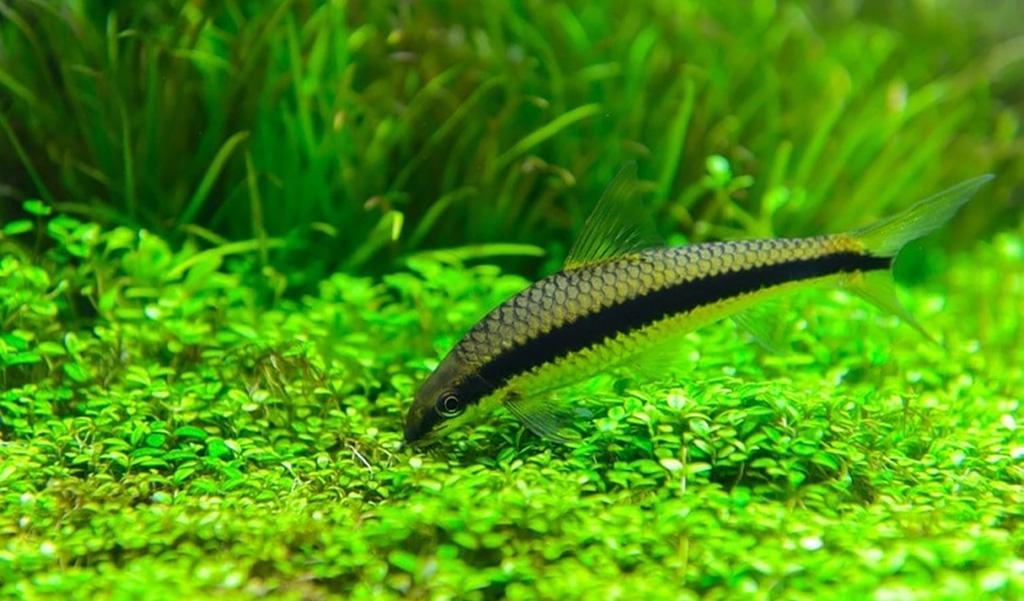
Tank Cleaning Fish – Types of Sucker Fish
Suckerfish prefer living on the bottom, and they can remove the algae and other debris in tanks. As a result, the water quality can be stable and optimal. However, their cleaning ability may be less effective as they grow older. They would not eat the debris in the water if there was plenty of food. In this segment, we will share some sucker fish with you. Moreover, for better cleaning, you can apply an algae scraper.
Chinese algae eater
Chinese algae eaters can grow up to 8–11 inches and mainly eat algae in tanks. They can live for around 10 years. But they are semi-aggressive, they may latch on other fish and suck the slime coating. The ideal water temperature of the fish is 72-82℉.
Otocinclus catfish
Otocinclus catfish are commonly famous as Oto, which are peaceful and small, but you should avoid keeping them with large cichlids. Besides, they like to live in schools. On the other hand, they can eat algae quickly and depend on a lot of algae to survive. They can live for 4–5 years and grow up to about 2 inches.
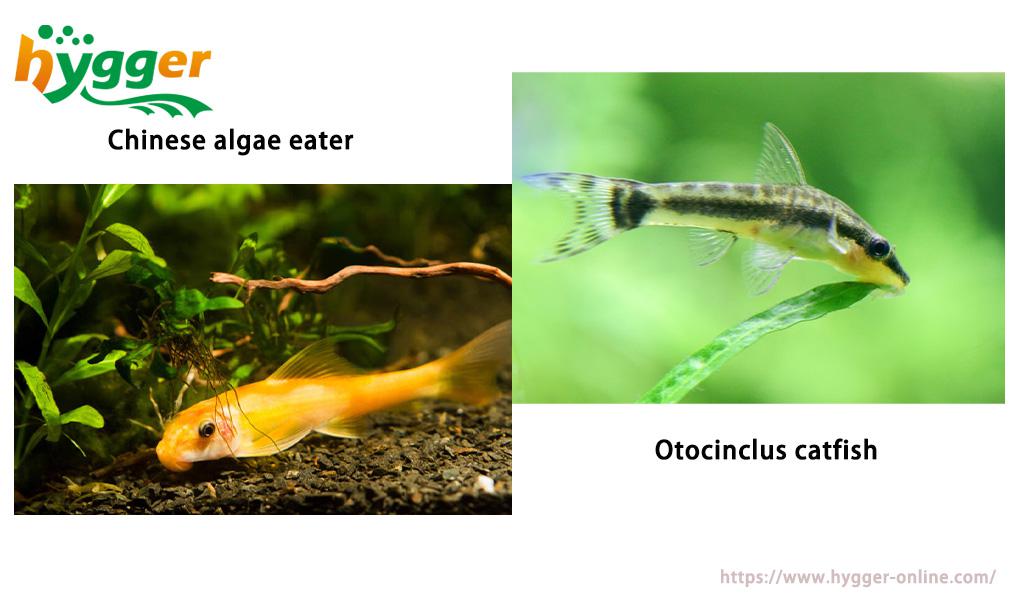
Cleaning Fish – Algae Eater Fish
This part will provide you with cleaner fish that can prevent the algae from thriving in tanks and remove the algae from tanks. Aside from that, if you apply some aquarium tools while introducing the fish in your aquarium, like gravel cleaner and water changer, the algae control will be better. Next, we will introduce some algae eater fish for you.
Siamese algae eater
Siamese algae eater is also named crossocheilus oblongus. The fish possess the title of the king of algae eater fish. They eat black beard algae, hair algae, and the uneaten food in tanks. But they would attack small fish occasionally. The fish is suitable for large aquariums, as they can grow up to 6 inches and live for over 10 years. Nevertheless, they require plenty of room to swim and enough oxygen.
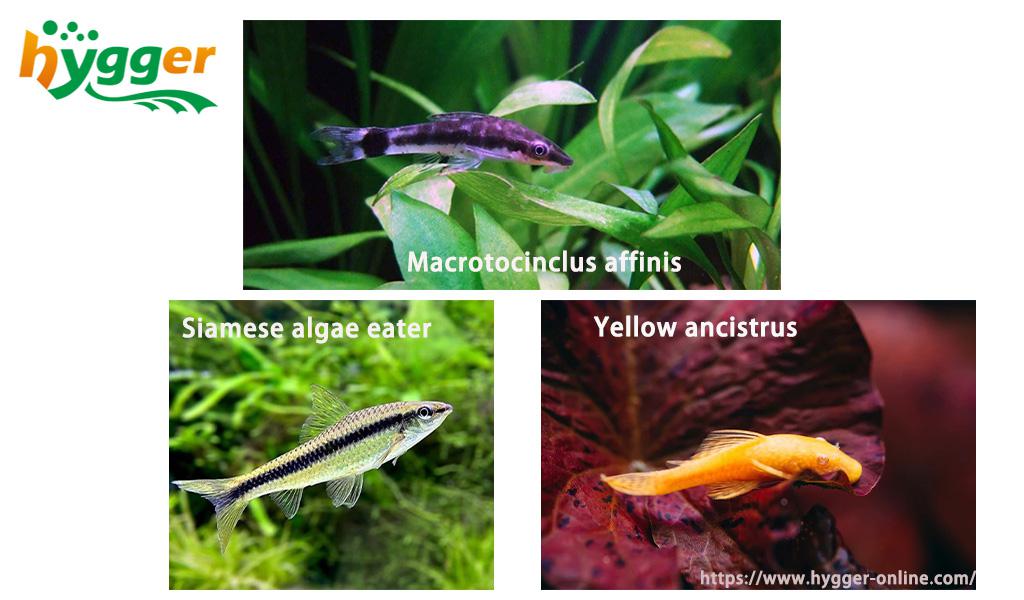
Macrotocinclus affinis
Macrotocinclus affinis are small cleaner fish, which can swim into narrow spaces and start cleaning. They can grow up to 1.5-2.5 inches after being adults. Their main food source is algae. They would suffer death if the tanks lacked algae. On the other hand, they also eat snails.
Yellow Ancistrus
Yellow Ancistrus are peaceful and will not pose a threat to other small fish in tanks. They make sense in removing algae. The tentacles of the fish have functions of tactile and taste. The fish can grow up to 5 inches and live for about 4 years.
Ornamental Cleaner Fish
Other cleaner fish can help to remove the tank oil slicks or other debris on the tank, they are also ornamental fish at the same time.
Black molly
The black molly is the king of removing oil slicks in tanks. Meanwhile, they can remove the algae on the aquarium glass. Moreover, they can be kept with other peaceful species. Molly prefers a pH level of 7.5-8.5. The fish can grow up to 4-4.5 inches and live up to 5 years. On the other hand, the fish can reproduce quickly, so it is required to pay attention to their numbers. Or your aquarium may become too crowded.
Kiss fish
Water fleas, moss on the aquarium glass, and plants are the food source of kiss fish. Someone also holds that the fish kissing each other is to clean the moss on both mouths. The kissing fish can live for about 7 years and reach 6 inches.
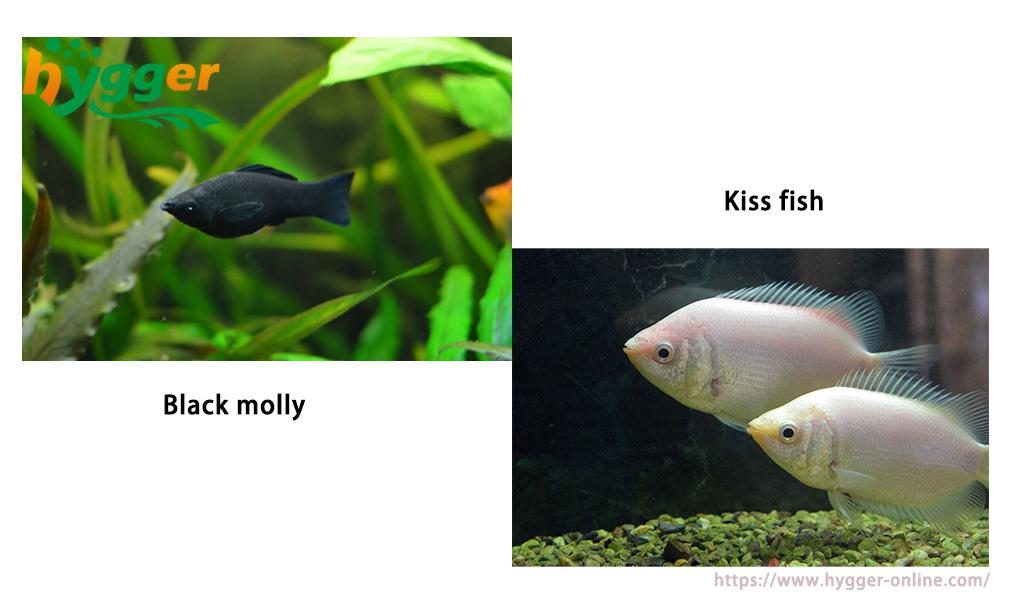
How Long Do Cleaner Fish Live?
The lifespan of cleaner fish varies for different kinds. Aside from that, the living environment also affects their lifespan. Next, we will list the life span of some cleaner fish.
| Name of fish | Lifespan |
| Chinese algae eater | 10 years |
| Otocinclus catfish | 4–5 years |
| Siamese algae eater | 10 years |
| Macrotocinclus affinis | 3–5 years |
| Yellow Ancistrus | 4 years |
| Black molly | 5 years |
| Kiss fish | 7 years |
Conclusion
In summary, keeping some cleaner fish in your tanks helps you remove unnecessary algae or debris and release your hands. At present, do you know more about cleaner fish? Or can not wait to buy one? Attention, here are also some pointers for you!
It is recommended to buy in reputable stores and choose one with a dark color. Daily maintenance is also important. You should research the ideal water parameters for your fish, including the water temperature, pH, and GH levels. Furthermore, regular water changes are necessary. By the way, do not forget to test the water parameters before you introduce the fish.
Finally, hope you will have a good journey to keep cleaner fish, and thanks for your reading!
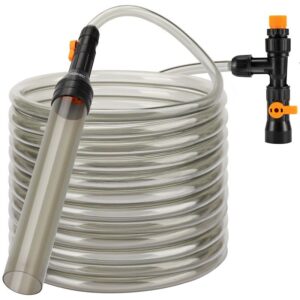
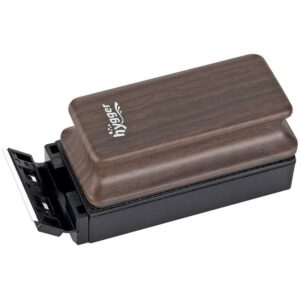
Leave a comment